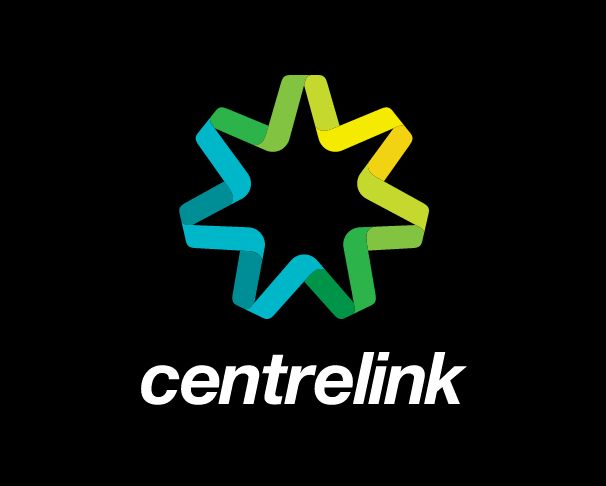
This article is part 2 of a series of articles looking at the #NotMyDebt movement from a knowledge management perspective.
When she started #NotMyDebt to tackle robodebt, the controversial scheme rolled out by the Australian Government which saw thousands of welfare recipients falsely accused of debt, Lyndsey Jackson brought an array of skills which have stood her in good stead over the last couple of years. One of these skills was in community building:
LJ: “Because my background is in community building but also crowdsourcing and how we use technology for engagement, but also for training, how we increase the digital skills of women living in regional communities. I have an interest in that.”
This understanding of how community building and crowdsourcing principals work enabled Lyndsey to respond to a situation that was rapidly changing and evolving as more information about robodebt, initially patchy and confusing, started to emerge as a result of research and campaigning by debt recipients, the media, and the not-for-profit sector. #NotMyDebt played an important part in these early knowledge gathering efforts.
#NotMyDebt has an impressive track record. It has made information available to people wishing to understand and then appeal their debts. Given the vagaries of government policy and the inefficiencies of Australia’s social security department, Centrelink, this is actually quite a complicated thing to undertake.
#NotMyDebt has also driven advocacy against robodebt through making the stories of distressed victims available en masse via its website, publicising campaigns and a Senate Inquiry, collating and circulating media stories, and facilitating discussion on its Facebook and Twitter pages. Alongside the people who had been hit by a debt and were reaching out for advice, information, and moral support there were other concerned citizens – policy wonks, technical geeks, and legal experts – who were clustering around the hashtag and website with their own investigations and findings, obtained from trade journals, government websites, or even via Freedom of Information requests. And then there were people like me, with no special expertise to offer and unaffected by a debt, but horrified at the distress of people who were.
So I asked about this community of disparate people in my interview with Lyndsey:
ML: “It really fascinated me, this community of people. They were swapping expertise, information, and certainly a lot of moral support. Did that mix of people surprise you at all, or as a community builder were you sort of expecting that they were out there and they just needed the focal point to pull them in?”
LJ: “The willingness of people I definitely found interesting. I guess I’ve got this theory that people will contribute if they are asked to or if they’re given space to. I guess the depth of knowledge and the range of expertise and how interested people were surprised me. Yet it didn’t surprise me… What I really have loved about this is that there has been a real building of community because you’ve got people that otherwise wouldn’t have necessarily mixed with each other… you see the evening out of power, dynamics or expertise…”
LJ: “Especially in the early days, there was quite a bit of online campaigning that we were doing as well. So rather than feeling like we needed to do everything ourselves, other people just started to do things and we would just leverage that. For example, someone else created the parliamentary petition. And all we did was support that and support the person behind it and reach out to them and say, ‘Okay, it’s really great that you’re doing that.’ What I’ve found throughout the whole time is the amount of expertise that exists in the community and people’s willingness to share that expertise and to do something that they really like to do and that they can do, especially when it comes to micro volunteering.”
#NotMyDebt has an impressive array of activity on its resume. And it was successful with, at time of writing, 1231 victim stories collected and published, and participation in campaigns that resulted in:
- Tens of thousands of debts recalled from debt collectors at the beginning of the year;
- A massive reduction in the number of letters being sent and letters being sent by a slower, more expensive method;
- A significant overhaul of enforceable privacy guidelines for the entire public service; and
- The prevention of robodebt being expanded to target aged and disability pensioners.
Underpinning this activity is information and knowledge. On the website there are stories of lived experience, technical information about how to appeal a debt, formal information about government policy and procedure. Always humming vitally along as an accompaniment to this is the informal but powerful engine of public interest made manifest as dialogue on Facebook and Twitter.
It’s easy to discount social media discourse as knowledge, especially on the much maligned Twitter, but the dialogue that sprang up around the #NotMyDebt hashtag, especially in early 2017 when aggressive roll out of debt collection was affecting many thousands of disadvantaged people hard, was a fascinating mix of cries of distress, practical advice, and arcane investigations into the processes, ethics, and governance (or lack thereof) underpinning the scheme.
During our interview, I opined that the activity around the #NotMyDebt hashtag showed Twitter – often portrayed as a denizen of trolls – at its best. Lyndsey agreed. But Twitter was just one part of a complex whole alongside the website and Facebook. Lyndsey and the #NotMyDebt volunteers were able to combine these tools and configure them as platforms that were dynamic, psychosocially safe, informative, and empowering for a diverse group of people.
LJ: “I guess in a sense it’s a true movement because you have these different moving parts and no one is asking each other for permission. They just go about doing what it is that they would do. But you do start to create forces between you where everyone’s amplifying and supporting each other.”
The empowerment of people through #NotMyDebt was important, both in terms of its efficacy as a movement and as evidence of its success as a community. Knowledge was created, curated, explained, analysed for its usefulness, and disseminated. This was especially vital for the people who had received debt notices, and who were subsequently struggling with feelings of anger at the injustice of this when they were convinced they did not owe money, further anger and frustration at the difficulty of getting clarification from Centrelink, and panic over how they were to pay off the debt if they could not successfully appeal it.
#NotMyDebt was a vital resource for these people as not only could they obtain the administrative, financial, and legal advice they needed from its website, but be encouraged and supported to use that knowledge by the community that formed around the website and its social media accounts.
LJ: “I really wanted to create that feeling that this is a conversation. And if you have a point of view, then you can enter this conversation. But also if you’ve been watching it for a while you too will start to build up the language and the norms and the expertise around the conversation so when those things come up you’ll feel like you too can contribute.”
People like myself, untouched by debt, were also empowered by #NotMyDebt, which not only explained this complex issue, but normalised conversation around it, thus equipping the community to advocate against it.
LJ: “I think that the main thing that happened is if you’re going to create a bit of a space where people’s voices can be heard, then they will start talking up into that space.”
Knowledge management often succeeds or founders on stakeholder engagement, whether that be in a large corporation or a small grassroots not-for-profit. #NotMyDebt is a fascinating case study in knowledge management because it shows how effective community building drove agile and equally effective knowledge management.
At the same time, it also shows how a need to manage knowledge facilitated highly effective community building. By using community building techniques to create a digital space, #NotMyDebt drew together a diverse but passionate community, rich in expertise, stories, and intentions. The types of knowledge offered by that community in turn informed the shape and function of that digital space.
Next and final part (part 3): Magic skills: Leadership styles and community-based knowledge management.
Header image source: © John Shakespeare, used by permission.




